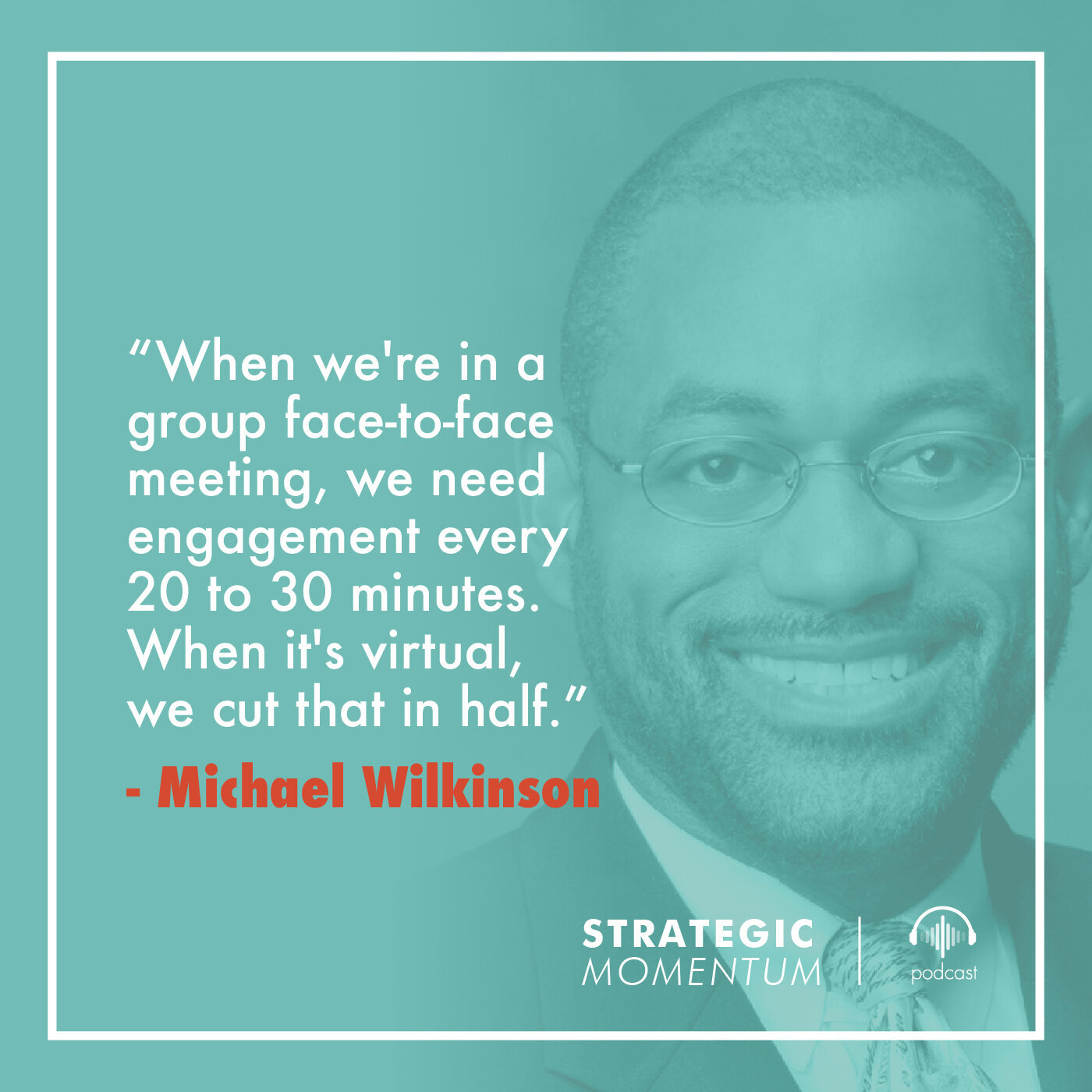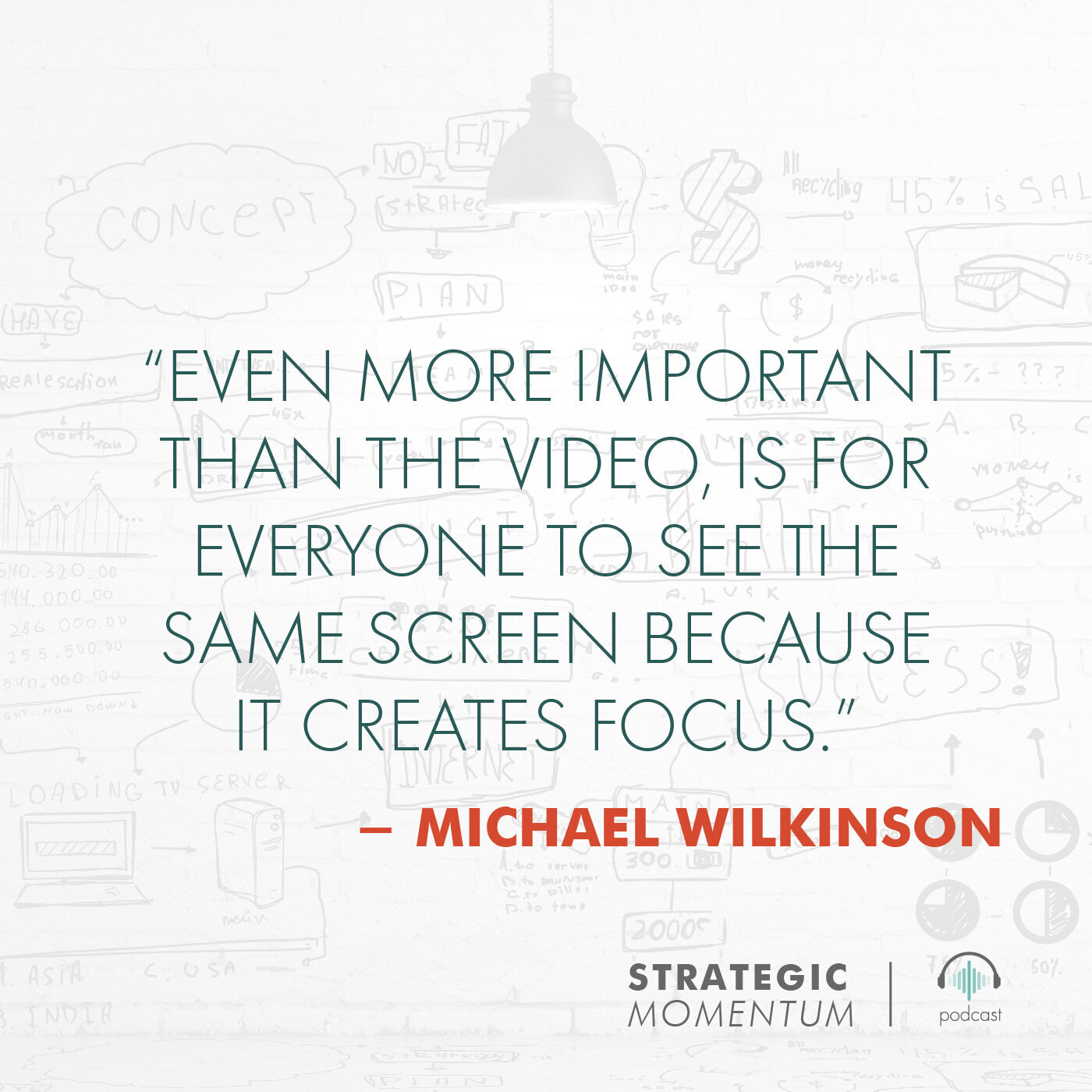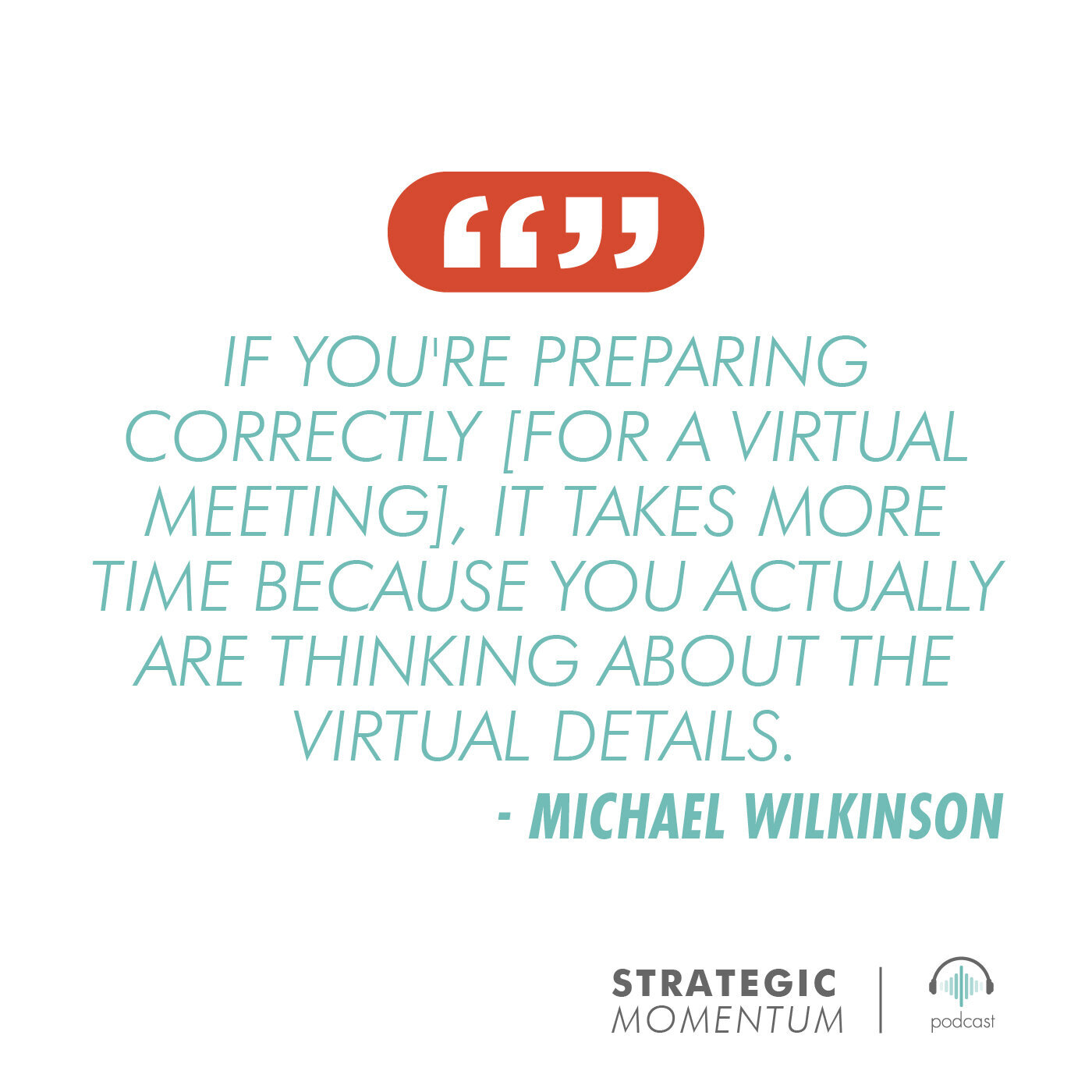Ep 69 - Remote Work: Tips on Effective Virtual Meeting Facilitation During the Coronavirus Pandemic - with Michael Wilkinson
Find Us Wherever You Listen To Podcasts
With COVID-19 necessitating the rapid shift to working remotely, we felt it would be particularly relevant to share insights from a favorite past guest of ours — Michael Wilkinson — because our goal is always to help you navigate through the change we are all facing so you can create the right momentum to move forward.
Michael preaches the tenets of process and preparation that enable leaders to boost collaboration, productivity, and morale among their teams. In this episode, we highlight his specific tips and advice for facilitating virtual meetings.
When you have the right parameters in place, the transition to remote work becomes easier, and you can move faster toward achieving your initiatives.
Key Takeaways
To run smoothly, virtual meetings require more planning than in-person ones. You should plan for all of the same factors – purpose, product, probable issues, and participants – and then anticipate and create solutions in advance for the technological challenges and virtual dynamics.
Set up a technical environment that ensures every person can 1) see the same materials on screen in order to get aligned and engaged, 2) have a voice, and 3) stay on-task – while still applying the facilitation techniques that you’d use for an in-person meeting.
Leverage video, as it allows better engagement than conference calls, but what’s critical is that everyone can see the same screen.
Use a moderator, particularly a technical one responsible for those potential tech issues when you have more than six or so people in the meeting.
When in a group face-to-face meeting, engagement is needed every 20 to 30 minutes. When it's virtual, it’s cut in half. So an engaging activity needs to happen every 10 to 15 minutes.
The “round robin” technique is a valuable tool for virtual meetings.
Systematically call on someone every 10 to 15 minutes so that everybody knows they're going to have to respond. They will pay much closer attention because it's happening every time.
Change up the starting point as to who gets called on each time as well.
Resources:
Learn more about Leadership Strategies
Buy Michael’s Books on Facilitation










